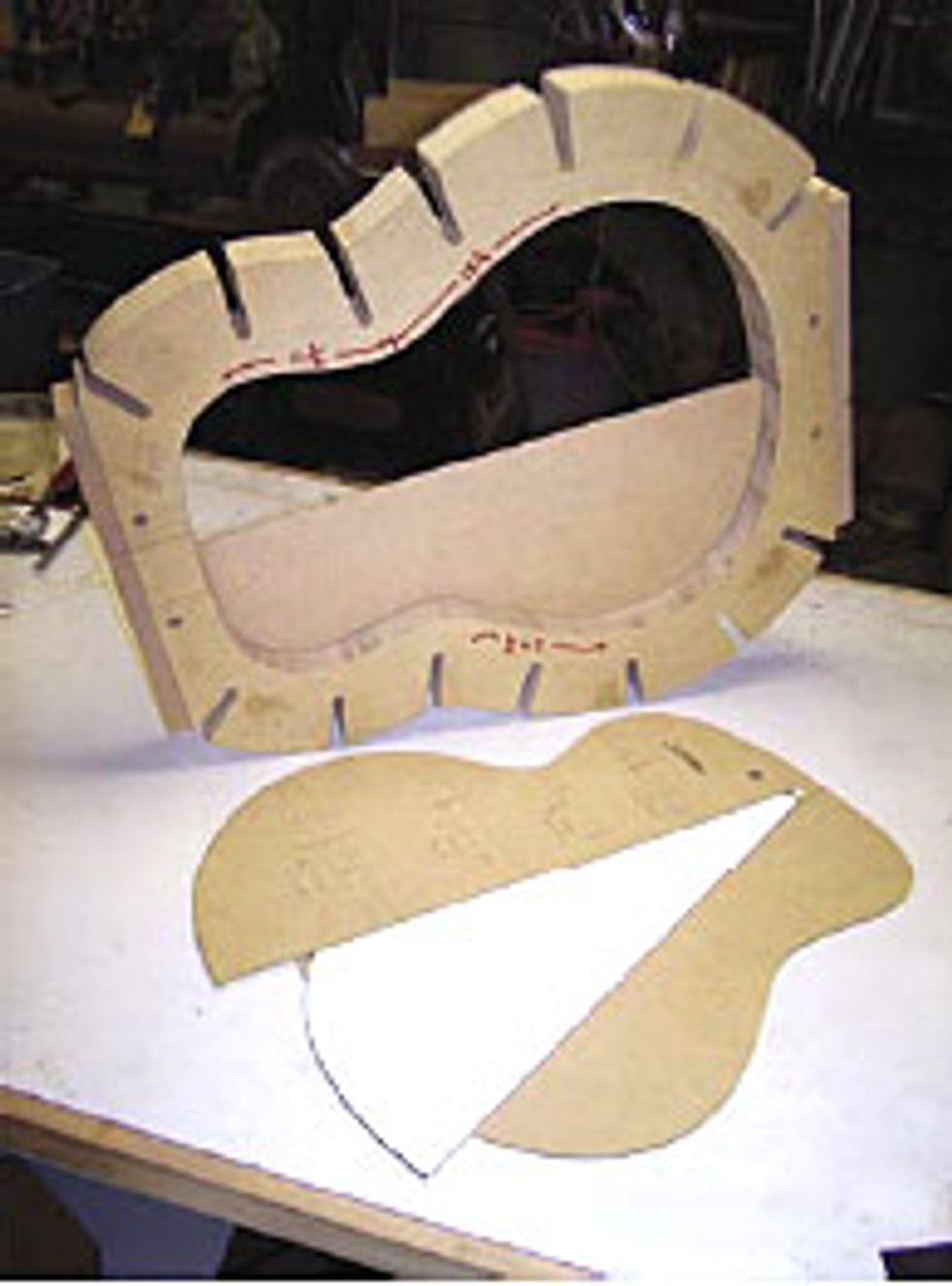 At some point early in an aspiring guitar builder’s years, he or she is faced with the challenge of what shape their guitar body should be. Go with the tried and true – a Martin Dreadnaught, or a Gibson Jumbo – or venture out and let your creative juices flow with your own unique design? For this discussion, we are forgoing tenor variables derived from tone wood, and focusing only on the guitar box itself.
At some point early in an aspiring guitar builder’s years, he or she is faced with the challenge of what shape their guitar body should be. Go with the tried and true – a Martin Dreadnaught, or a Gibson Jumbo – or venture out and let your creative juices flow with your own unique design? For this discussion, we are forgoing tenor variables derived from tone wood, and focusing only on the guitar box itself. One of the biggest considerations has nothing to do with a guitar at all; it has to do with the guitar case. Most case manufactures produce standard guitar shaped cases, making them readily available, and affordable. This makes a great argument for using standard body shapes, especially with high costs of custom cases and lead times of 6 to 20 weeks from some suppliers. Another advantage of using existing standard guitar shapes is that these shapes are usually accepted in the market and that equates to a lot less explaining to do down the road.
If you decide that you can’t live with your guitar looking like somebody else’s, then you have no choice but to take the deep custom plunge. But where does one start?
Define your sound. I would suggest you focus on a guitar that in the past has sonically influenced you. If you have an ideal guitar in mind, then you have a good refrence to work with. If at all possible, get your hands on that guitar, be it a small punchy Parlor, or a bassy Super Jumbo.
The general rule is the bigger the guitar, the more bass-heavy it will sound. A deeper box will accentuate bass frequencies with a heightened level of reverberation. Smaller guitars lean towards brighter, crisp mids and trebles, and a shallow box will improve sound projection with good individual note clarity.
Define your shape. One good method is, on a poster board, trace an existing guitar shape using a pencil and modify the shape based on your improved personal preferences. This gives you a good framework to expand or subtract from. Remember, there are five basic dimensions to consider when designing your new shape: upper bout and lower bout width, waist tightness, body length and body depth. There is no doubt you’ll need the eye of an artist here, so look for help if you don’t possess the chops to pull this off. The contour lines must be perfectly graceful with a high level of fluidity. Our goal here is to make a master template, which is used to produce patterns and molds, so there is no room for error. Once you’ve established a shape that you like, then you can proceed to cut it out with a pair of scissors. Note that only half the guitar shape is necessary, as you would flip your template to produce an exact left and right mirror image, guaranteeing perfect symmetry to your new guitar shape.
Make some test tracings with your poster board template, study the overall appearance and ask yourself plenty of questions. Is the lower bout round or flat at the bottom? Is the waist tight enough for comfortable playing in the sitting position? Will you be producing cutaway versions?
Once you are totally satisfied with your new creation, using spray adhesive, you can proceed to attach your poster board template to a sub straight panel, such as 1/8” Plexiglas or Masonite to produce your master template. Carefully cut out your template on a band saw then meticulously sand-in the final contours.
Chances are that you’ll be doing a little shape refining once you’ve produced your first new custom designed guitar, so I would suggest not getting discouraged if your first attempt does not work out as planned. Remember it gets easier with your second or third attempt!
Jeff Babicz, founder of Babicz Design Ltd., builds his acoustic and electric guitars using his patented, and award winning Lateral Compression string anchored Soundboard, Torque Reducing Split Bridge, and Continually Adjustable Neck designs.
www.babiczguitars.com
Questions? email me at: babicz@babiczguitars.com

















